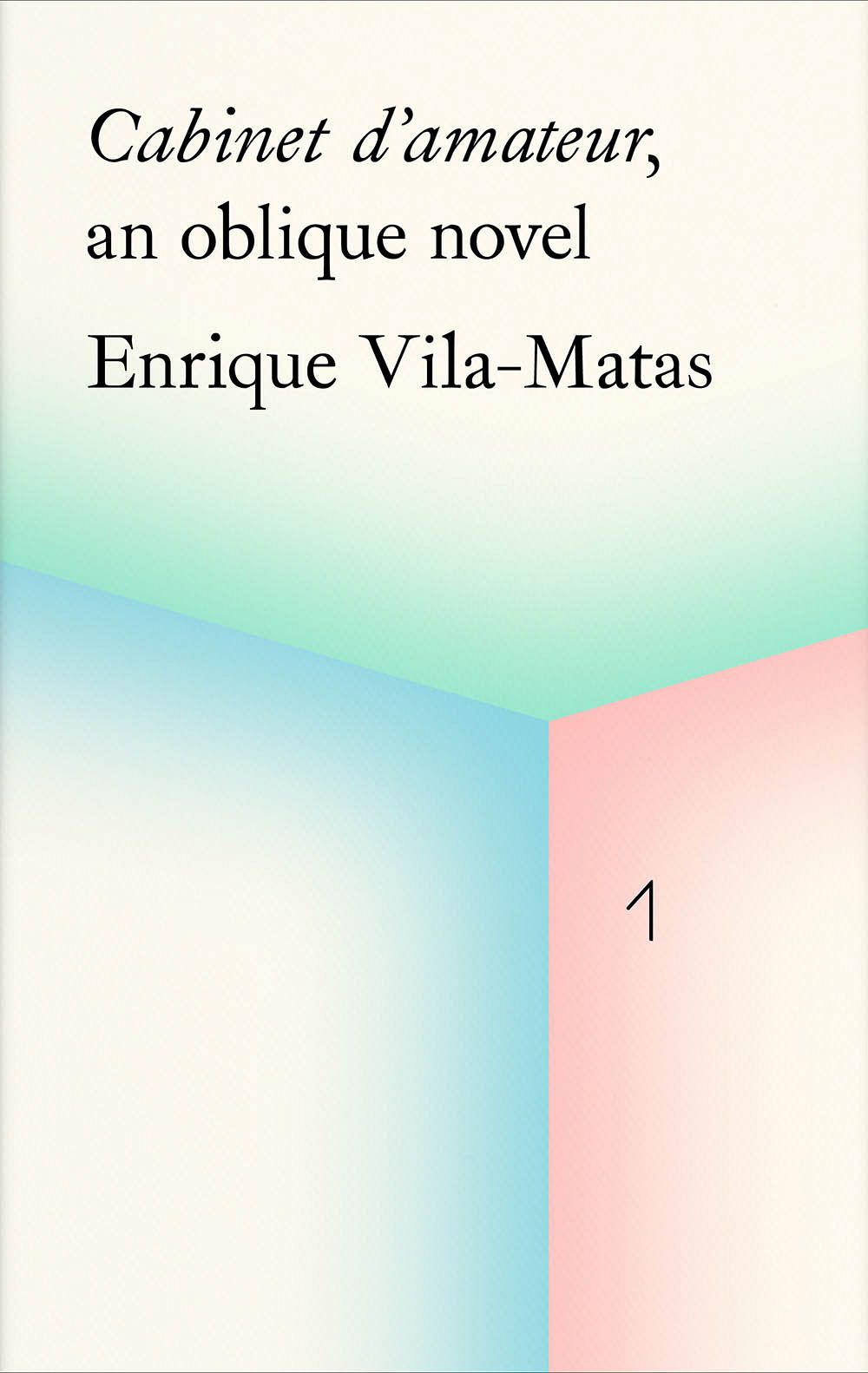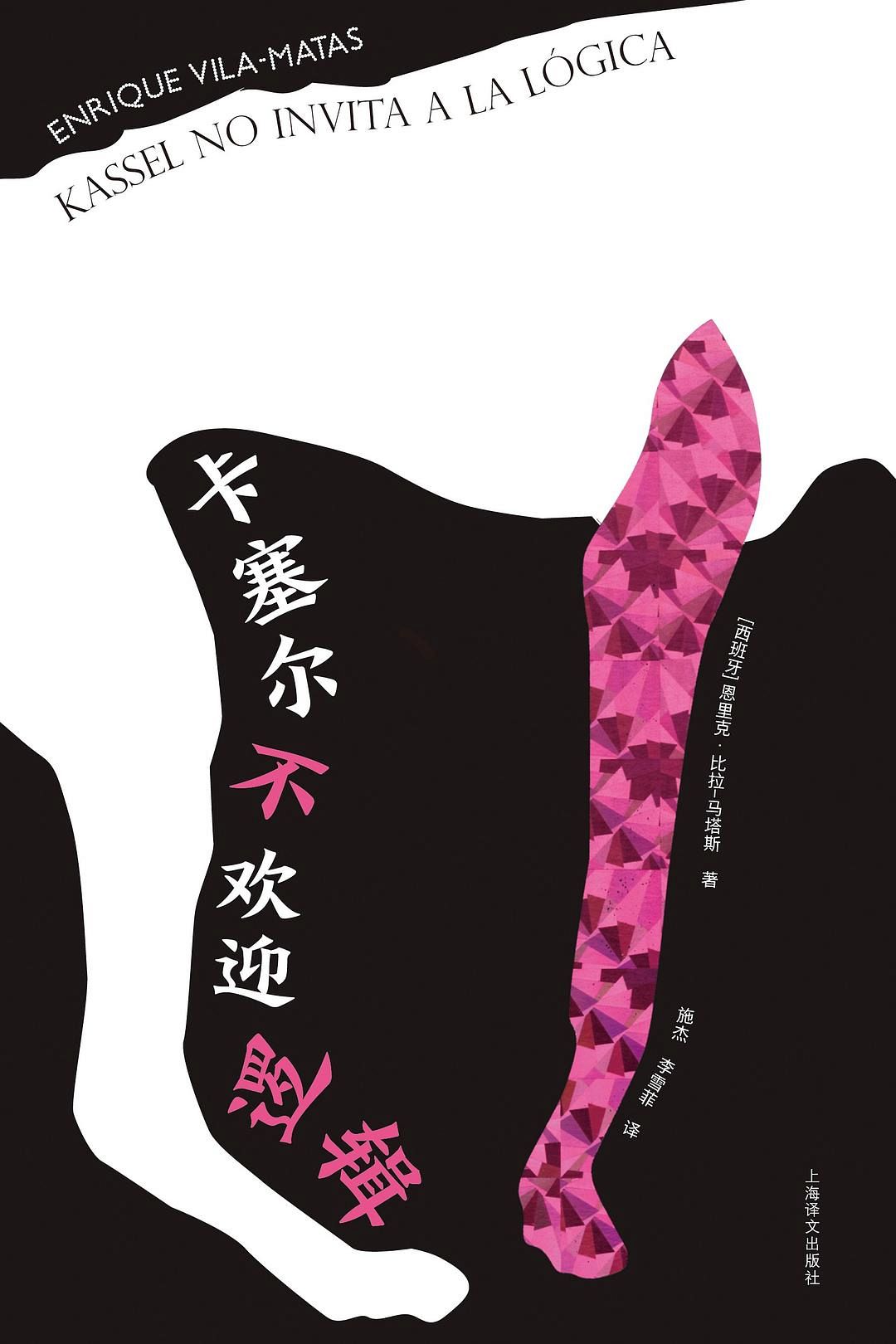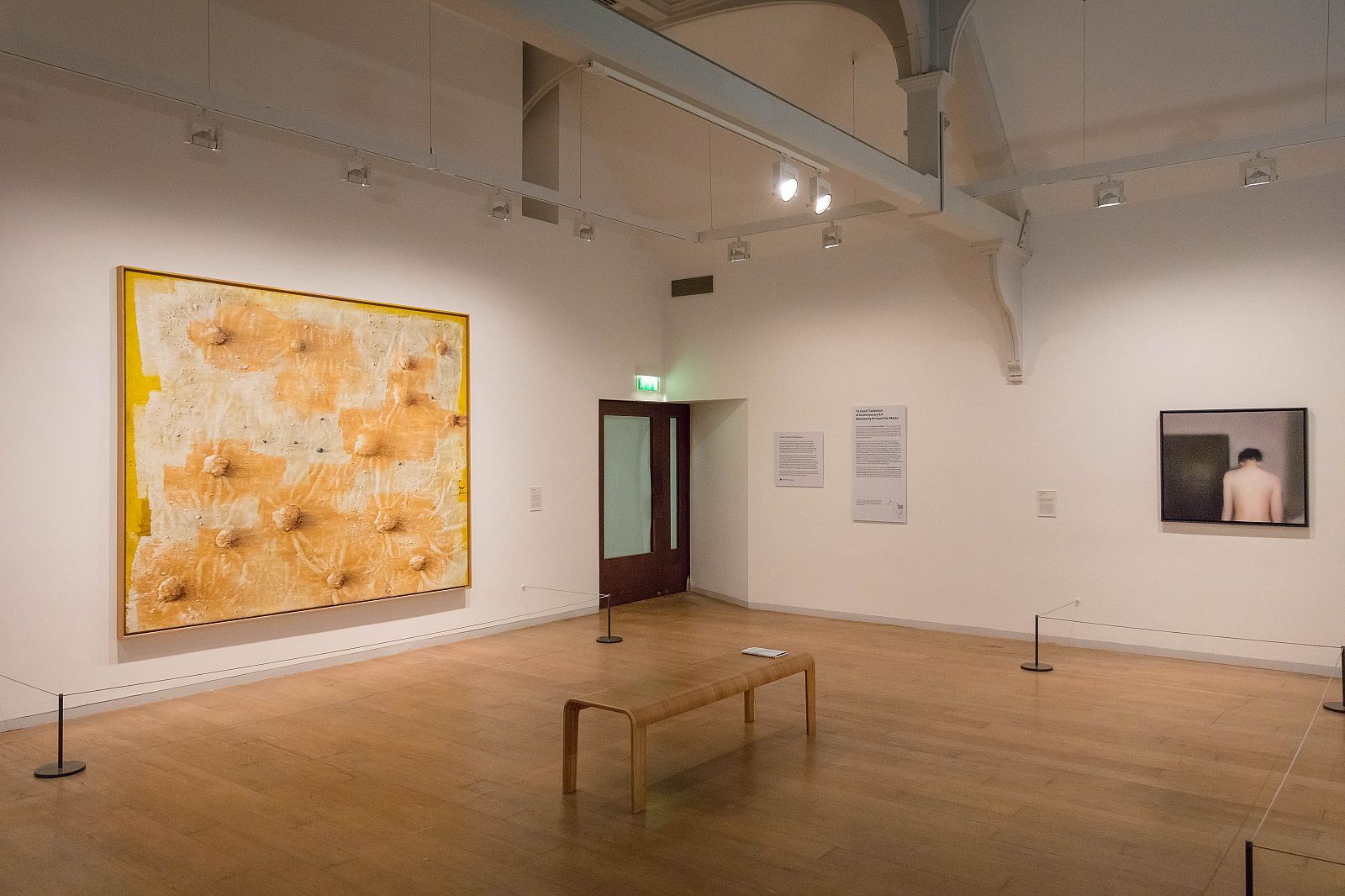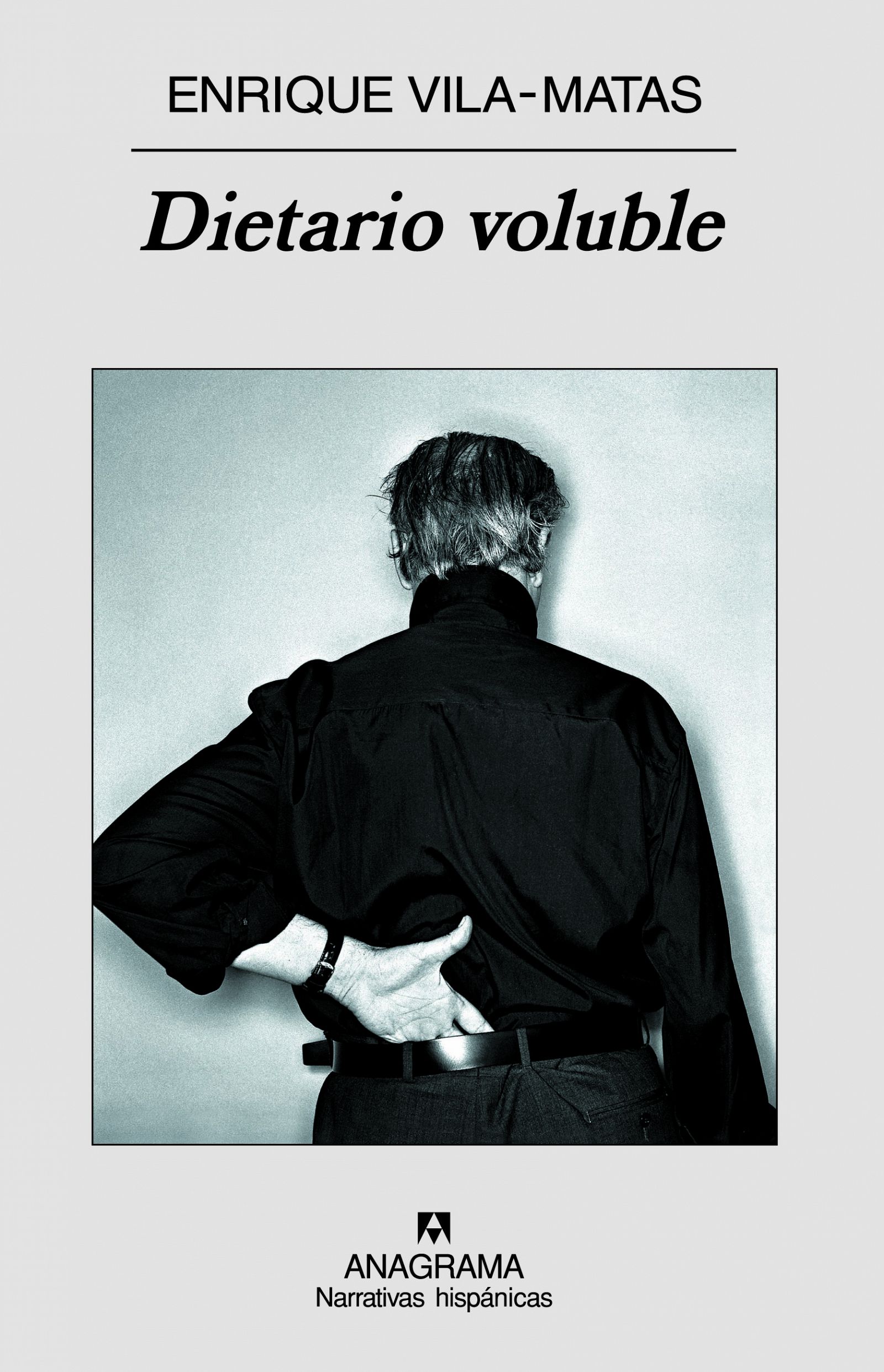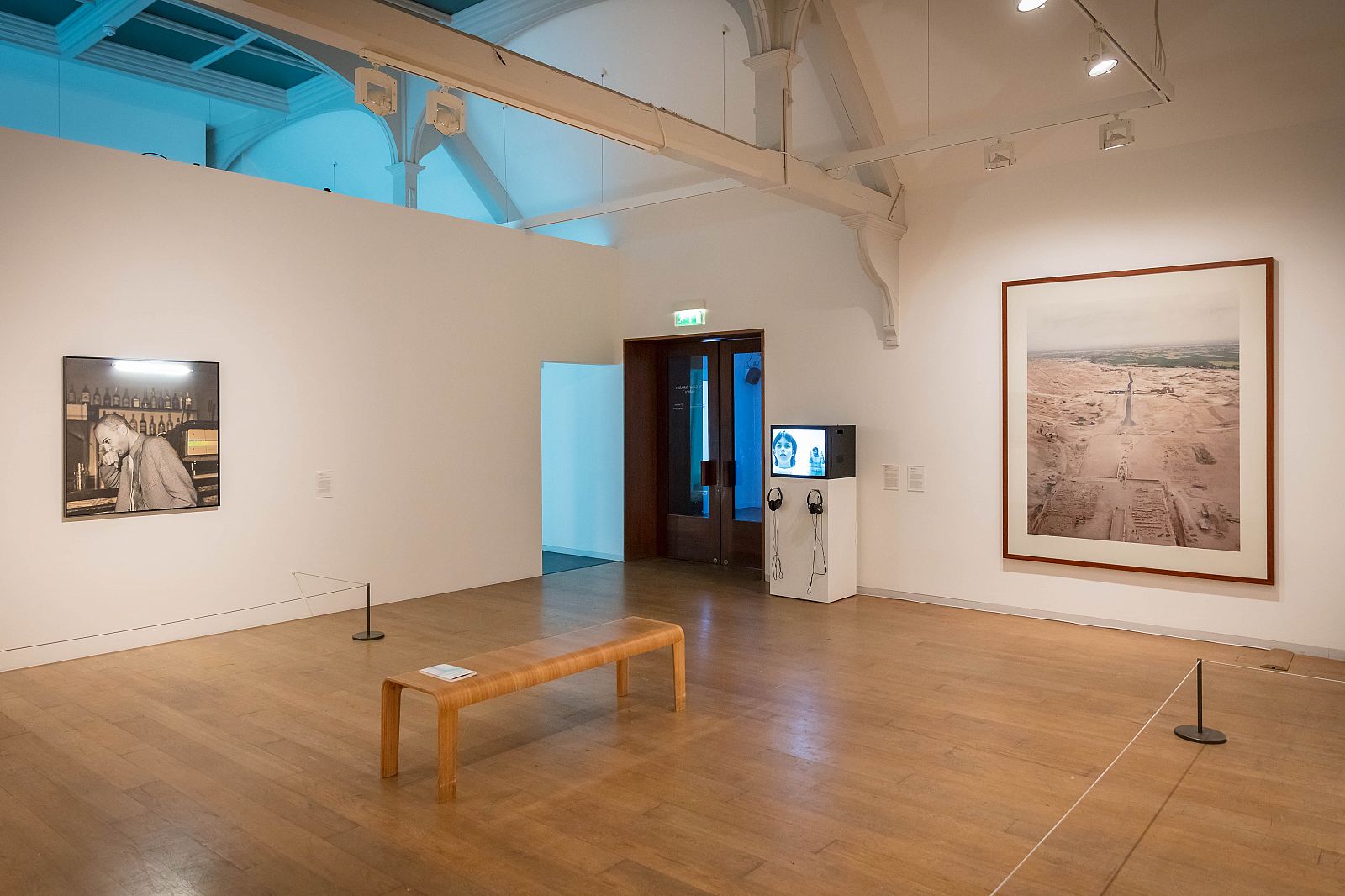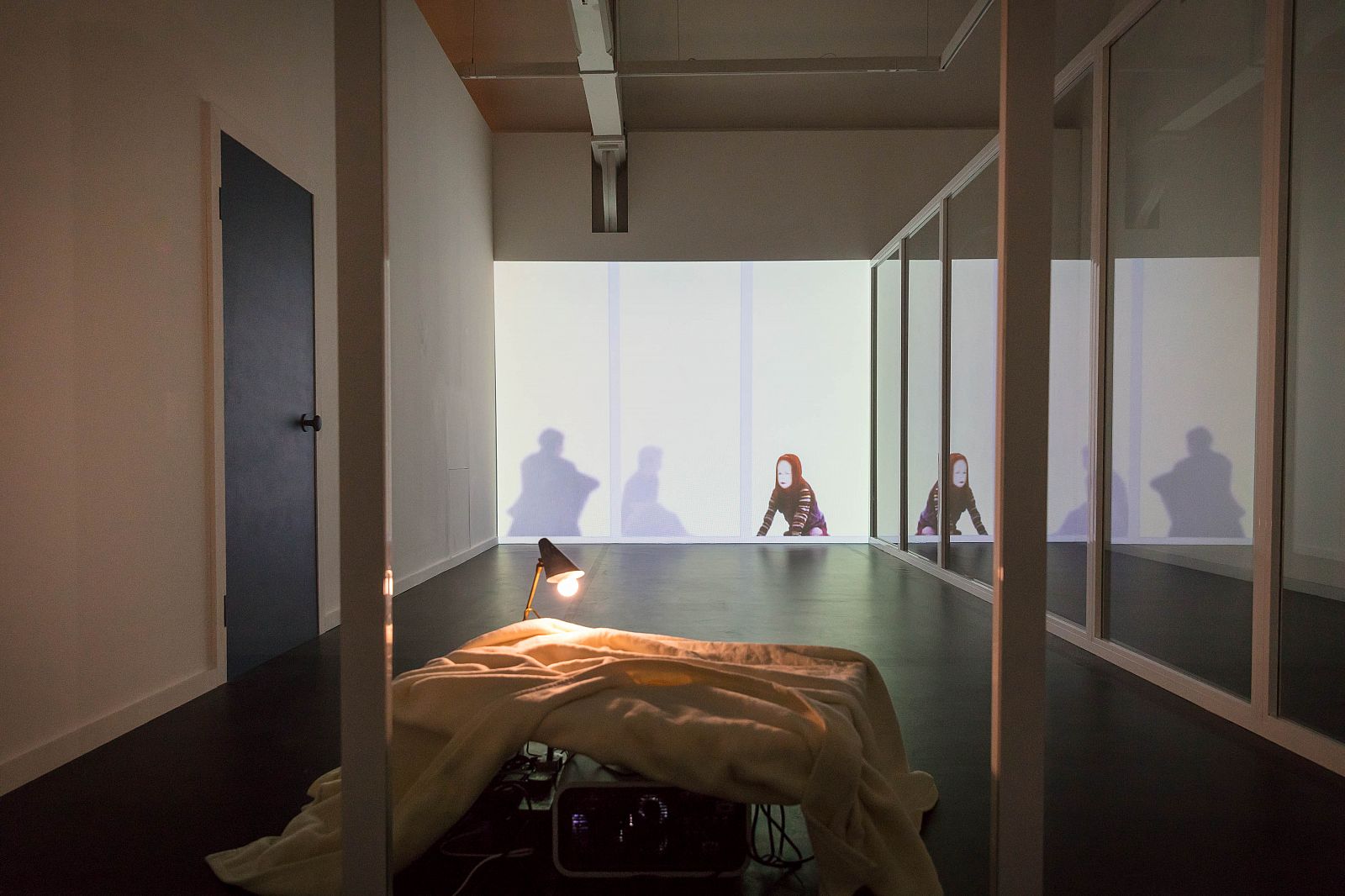It’s been an unusual spring. The violent convolutions of COVID-19 have forced everyday life to migrate completely online, and art exhibitions are no exception. Revamped 3D exhibition rooms and .jpeg images with virtual benches photoshopped into the foreground equally evidence curators’ efforts to find solutions for the new reality of contactless art. On this note, it is perhaps worthwhile to revisit Spanish novelist Enrique Vila-Matas’s Cabinet d’amateur, an oblique novel.1All following quotations, unless otherwise specified, are from: Enrique Vila-Matas, Cabinet d’amateur, an oblique novel, London: Whitechapel Gallery; Barcelona: la Caixa Collection, 2019. Though you might have missed the exhibition last year, held offline at Whitechapel Gallery, you can enter an even more fantastic one in and through his novel, for his novel is an exhibition in itself.
Vila-Matas has written Sophie Calle into the hyperreal fiction Because She Never Asked (2007); used his artist friend Dominique Gonzalez-Foerster’s 2008 Turbine Hall commission TH.2058 (2008) as a core concept in Dublinesque (2010); and given a private tour through a documenta in The Illogic of Kassel (2014). These “exhibition novels” invite us to reconsider the frail line between literature and art. What makes Cabinet d’amateur stand out from the rest of his literary endeavors is that he actually selected six works from the la Caixa Collection for the aforementioned exhibition at Whitechapel Gallery. Installed like an exhibition in a household, the exhibition felt like a series of footnotes to his novel.
As the novelist observes, this exhibition was a “biographia literaria,” dedicated to – in his own words – “the history of my style.” The mysterious, central work of the exhibition is I.G. (1993), an oil painting by Gerhard Richter that evokes soft-focus photography. The figure on canvas is Isa Genzken, Richter’s second wife, who divorced him soon after the work’s completion. She stands with her back to the audience and her head slightly bowed; the dark space to her left could be either a door or a mirror. By including this work, Vila-Matas gestures to the profound mystery inherent to the whole tradition of back portraits, along with a nod to his own debut novel, The Illustrated Assassin (1977) – a book he described as “written with its back so firmly turned to the reader that it seemed almost intent on finishing him off.” Indeed, in this strange detective novel (which he completed at the Paris apartment rented for him by Marguerite Duras), there is even a manuscript that can end the life of whoever reads it.
The rest of “Cabinet d’amateur,” however, ceases to revolve around the idea of “exhibition qua fiction” in such an obvious, linear fashion. Instead, Vila-Matas goes on to pull from memory a slew of personal reflections on literature and art, jumping freely between different works and media to draw crisscrossing intertextual associations. At one moment, for instance – also departing from the figure of someone’s back – Villa-Matas recalls attending a Miles Davis performance in the 1960s, where the legendary jazz musician played with his back turned to the audience, as if he wanted to hide from them; this memory leads Vila-Matas to a further set of thoughts on jazz music that keep morphing throughout the text, a refrain picked up again and again throughout the chapters. Meanwhile, the dark, negative space in Richter’s painting becomes in the next chapter Kafka’s notion of the negative as literature’s task, before finally turning into Godard’s lament that, though the negative marks the birth of film, it has somehow completely vanished today. At the beginning of the novel, Vila-Matas discusses Richter’s meta-reflection, “can painting really represent reality?”; then, a few passages later, the author reveals his position on the matter by way of Tom McCarthy’s meta-fiction: “The novel is a genre that has difficulty in representing reality, but that very defect – an awareness of its own incompleteness – prompts such interesting ideas that writing novels seems a really attractive activity.”
Reading the novel, one notes that Vila-Matas is well aware his readers will reconstruct the exhibition with materials from their own palaces of memory. Here lies a seduction nearly impossible to resist, which is to add a few notes to this exhibition-qua-fiction on paper. We might, perhaps, add the dark room by Tino Seghal that had already appeared in The Illogic of Kassel, or add a manifesto: “We loathe the realist and the rustic, or the rustic and the realist, who think the task of the writer is to reproduce, copy, imitate reality”; or add the description of Vilhelm Hammershøi’s works in Dublinesque: “Behind the extreme emptiness and motionlessness, one senses something indefinable and maybe threatening lying in wait”; likewise, Melville’s scrivener who always “prefers not to” in Bartleby & Co. (2000), and those spirits that attempt to end their lives in Exemplary Suicides (1991), would too seem fit to feature in this paper-based exhibition.
Cabinet d’amateur also comprises meta-reflections on the novel form. In Rem Koolhaas’s eclectic design of the Seattle Central Library Vila-Matas sees the future of the novel: “The oblique novel of the future would have to be the novel of deliriums or not exist at all.” The library itself borrows the delirious structure of Koolhaas’s Delirious New York (1978), and appears to “presage the strange, complex structure of the novels of the future, because that amazing building was based on vague, disconnected, inconclusive shapes, lacking all harmony and visual logic.”
If it is still relatively easy to compare styles of novels to those of architecture, then, the use of actually existing architecture as metaphor for paper-based novels serves to emphasize the latter’s latent, oftentimes seemingly abstract, spatiality. Vila-Matas is – incontestably – one of the foremost contemporary exponents of novelistic spatial awareness. The inner spaces of his most popular titles, from A Brief History of Portable Literature (1985), Never Any End to Paris (2003), and Bartleby & Co to Dublinesque and The Illogic of Kassel, are fragmented structures organized into “delirious” mazes where shreds of contemporary literature and art history, anecdotes, story outlines and commentary are all entangled, and where the line between fact and fiction grows increasingly blurred. The sort of text he refers to as “novel” in fact straddles the definitions of prose, essay, art and cultural criticism, as well as the conventional idea of the novel; or, put another way, his novels tend to inhabit the periphery – or even the opposite – of the novel genre as conventionally understood. Take Cabinet d’amateur: composed of 25 fragments of varied length and style, it is the prototypical “delirious novel.” On the other hand, it is laden with references to and reflections on the structuring of the short novel itself. Moreover, as the author reveals, the work is itself “a minimalist homage” to Georges Perec’s eponymous title.
In fact, Vila-Matas’ Cabinet d’amateur belongs to a genre of painting composed of many paintings. Considering each chapter of this short novel as a painting lends us a new perspective on the chapter on Richter as the refrain (as if in a jazz song), and the chapters on the other five works as the symphony that, through variation, builds up and completes Vila-Matas’ biographia literaria. Gonzalez-Foerster’s installation Petite (2001) creates a phantasmagoric space populated by ghosts, while Dora Garcia’s The Breathing Lesson (2001) subtly yet incisively contemplates the notion of the “reverse side of things”; Carlos Pazos’ photographic collage Milonga (1980) lit by neon light tubes, exudes a fiction-esque ambiguity along with a realistic attitude of heroic despair, while Miquel Barceló’s A Handful of Earth (1989) and Andreas Gursky’s Theben, West (1993) echo each other with their perspectival play of long shot and closeup, abstraction and figuration. Each a painting within a painting, variations on Vila-Matas’ literary art of the negative, coinciding with Robert Walser’s observation in Der heisse Brei (The Hot Porridge) that, when confronted by porridge that is too hot, one should take spoonfuls from the edge of the bowl. We wait for the real kernel with our detours.
Just as in The Illogic of Kassel Vila-Matas suddenly realizes that the curators of documenta have set him up – “They’ve installed me,” he writes – in Cabinet d’amateur he seems to take equal pleasure in assuming a passive authorial voice, making it one of the hallmarks of the exhibition-qua-fiction style.2Enrique Vila-Matas, The Illogic of Kassel, Trans. Anne McLean & Anna Milsom, New York: New Directions, 2015. One can even take the Samuel Beckett quote, which appears on page 29, as a meta-commentary on the novel itself:
“Here form is content, content is form.
You complain that this stuff is not written in English.
It is not written at all.
His writing is not about something; it is that something itself.”
Translated from the Chinese by Alvin Li.
btr is a writer, critic, and translator based in Shanghai, China. He has published Shanghai: Notes on City Life (2003), Bizarre Stories (2013), Mini Stories (2016), and Petite Mort (2017). He has translated, among others, Paul Auster’s The Invention of Solitude (2009), M&C Saatchi’s Brutal Simplicity of Thought (2013), Paul Auster’s Winter Journal (2016) and Abbas Kiarostami’s Lessons with Kiarostami (2017). He is the founder of online magazine Petite Mort (2014–).
Alvin Li is a writer, curator, and contributing editor of frieze, based in Shanghai, China.
